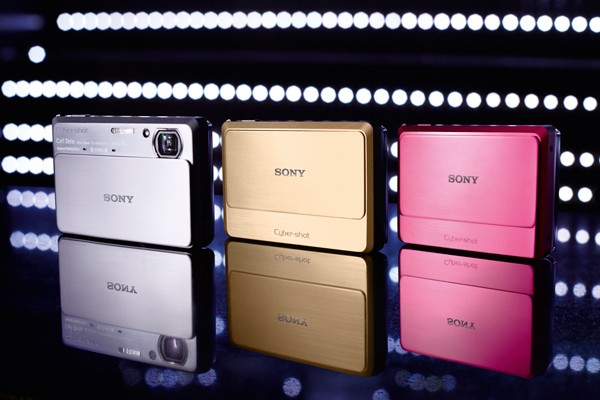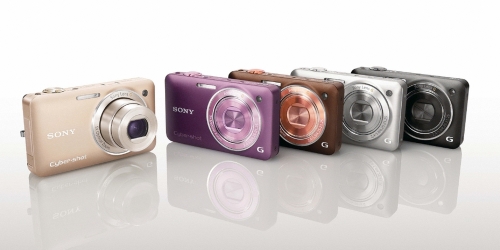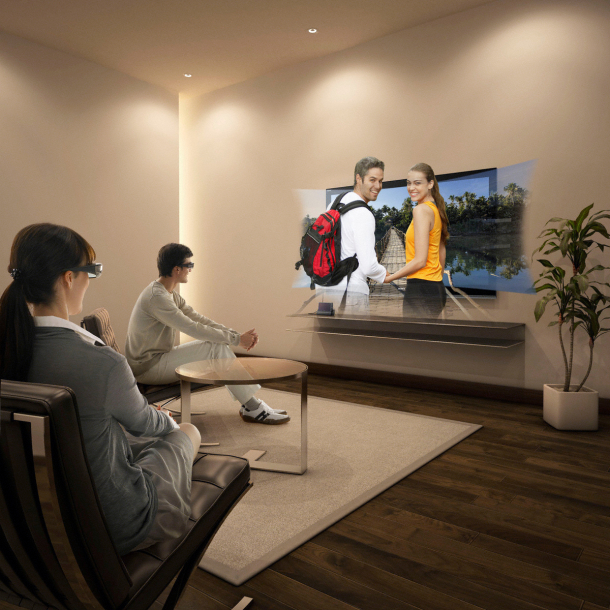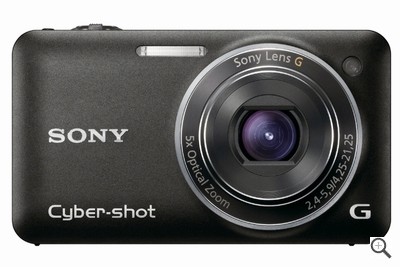Sony updates its Cyber-shot roster today with the WX5 and TX9. Replacing existing WX1 and TX7 models, the new cameras bring updated features like Superior Auto Mode and 3D Sweep Panorama capability to the Cyber-shot line for the first time…….
Though 3D-capable cameras are nothing new, two new additions to Sony’s 2010 Cyber-shot line are notable for their 3D-shooting capabilities: They’re the first everyday point-and-shoot cameras that offer 3D imaging capabilities, and they create 3D photos with a single lens.
It’s getting to be that time of the year again — time for Sony to expand / refresh its Cyber-shot lineup. Say hello to the 14.1 megapixel T99 and the 12.2 megapixel WX5 and TX9. All three feature BIONZ processors and 32MB internal memory (no word on external options). The T99’s your underwater-capable option, capable of shooting sweep panorama shots submerged as well as 720p 30fps HD video — or if you want something of an upgrade, the TX9 is also snorkeling-friendly, but itself can tout Full HD 1080i video recording, a Sweep Multi Angle for “3D-style” imagine, and the 3D sweep panorama with which the NEX series was just graced.
To create 3D images, cameras traditionally use a dual-lens system, with the two lenses spaced about as far apart as a pair of human eyeballs. After shooting, two slightly offset images are overlaid, and a visible 3D effect is achieved by using one of many presentation options (among them, red/blue anaglyph filters, different methods of polarization, or viewing the images with the naked eye on a specially treated screen).
In the 3D Sweep Panorama mode, the camera calculates what a dual-lens system would capture at different points in the scene and create a similarly offset image. When the image is viewed through special glasses on a compatible HDTV set, the resulting image shows a 3D effect; true to Sony’s proprietary-technology-happy reputation, the only way to obtain the proper 3D effect is by viewing the images on a 3D-capable Sony Bravia HDTV while wearing the company’s Active Shutter 3D glasses.
That’s a big investment just to properly view 3D images shot with these cameras, but the effects are impressive. At a recent demo, sample 3D panorama images viewed through Sony’s Active Shutter glasses on a Sony Bravia HDTV showed stunning depth-of-field effects, and foreground elements truly looked as if they were popping out of the screen.
Sweep Multi Angle is the feature that will create the experience of a 3D image without a 3D display or 3D glasses. Sony demonstrated this option using the image of a sports car. Multiple angles of the sports car were taken, and the camera then stitched them together. The camera is equipped with a gyro sensor so it can detect camera orientation; when you play back the Sweep Multi Angle picture, you can see the left and right sides of the sports car by tilting the camera left and right. The experience was similar to viewing a 3D model.
Two brand-new modes are in the mix. Sony is touting the new camera’s Superior Auto mode, which acts similarly to the company’s Handheld Twilight mode. In Superior Auto mode, the camera overlays multiple images taken in rapid succession at different exposure settings to create a noise-free photo with greater dynamic range.
Natural flash, meanwhile, is for subjects with backgrounds that have natural light, and is meant for indoor shots. The technology fires a photo of the subject with and without the flash; the two are then immediately merged to create a master photo with a bright subject in an environment that has natural light from the flash-less image.
Another neat trick of the Tx9 is its “background defocus” that gives you the DSLR-like effect of sharp foreground images with a blurry background (c.f. most of our headlining phone review images). If you’re willing to sacrifice water resistance for a 5x optical zoom and Sony G lens (the previous two feature 4x and Carl Zeiss) while still retaining TX9’s cool 3D tricks, you’re gonna want the WX5. At this point, they carry no price tag, but you’ve got a bit to wait anyway: the trio will all debut in mid-September.
Additionally, AV Watchhas listed some expected prices for Japan, so without further ado: the WX5 for 35,000 yen (about $400), the TX9 for 45,000 yen ($512), and the T99 for a more budget-friendly 29,000 yen ($330).
Resources :pcworld.com,engadget.com







Pingback: Twitted by kabbo06
what is the difference between the sony cybershot tx10 and the tx100? Is there any difference?